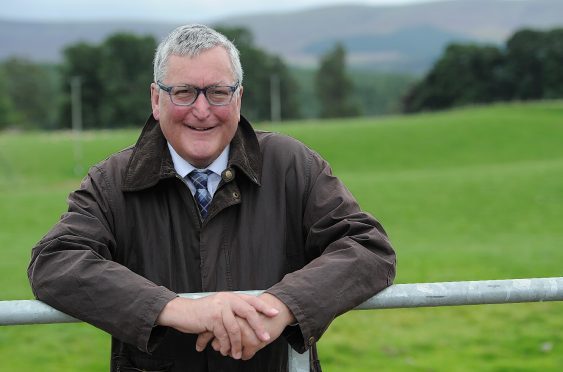Farmers and crofters wishing to apply for agri-environmental funding face the prospect of reduced payment rates.
Rural Economy Secretary, Fergus Ewing, visited a farm in West Dunbartonshire to open the Agri-Environment Climate Scheme (AECS) for 2017 applications.
The scheme, which sets out to promote low carbon farming and protect the environment, has received 1,573 successful applications for five-year projects worth a combined total of £103.9million since it launched in 2015.
Mr Ewing hailed AECS and said it would help farmers and crofters create a “fairer, greener, more prosperous nation”.
However, industry experts have warned the reduction in payment rates for many of the environmental measures on offer could deter farmers from applying.
For example, the rate paid for every tree planted under the category of ‘replacement or planting of individual trees within ancient wood pasture or hedgerows’ will reduce to £3 from £100 in 2016.
Farmers opting for ‘retention of winter stubbles for wildlife and water quality’ will see a reduction in payments to £96.18 per hectare, from £299.44 per hectare previously, while the payment rate offered for the ‘cutting of rush pasture’ will reduce to £8.45 per hectare from £35 per hectare previously.
Davidson and Robertson Rural’s agricultural consultant, Sonia Chapman, said the retention of winter stubbles was one of the more popular management options in the scheme.
She said the reduction in payment rates would put a lot of farmers off applying.
“They [government] are not making it easy and it will definitely put a lot of people off from doing certain options,” said Ms Chapman.
She also expressed concern at the timing of the scheme’s opening and said the application deadline of March 31 meant farmers and agents would be scrambling to complete the AECS forms and the Basic Payment Scheme IACS forms at the same time.
NFU Scotland’s director of policy, Jonnie Hall, said government needed to explain the “dramatic changes” in rates.
He said: “We are only in the third year of the scheme and we would want reassurance that the rates are not being adjusted as a means of delivering budgetary control. If these measures are delivering significant environmental benefits, then there is a case to be made for directing greater resources towards them rather than taking it away.”
